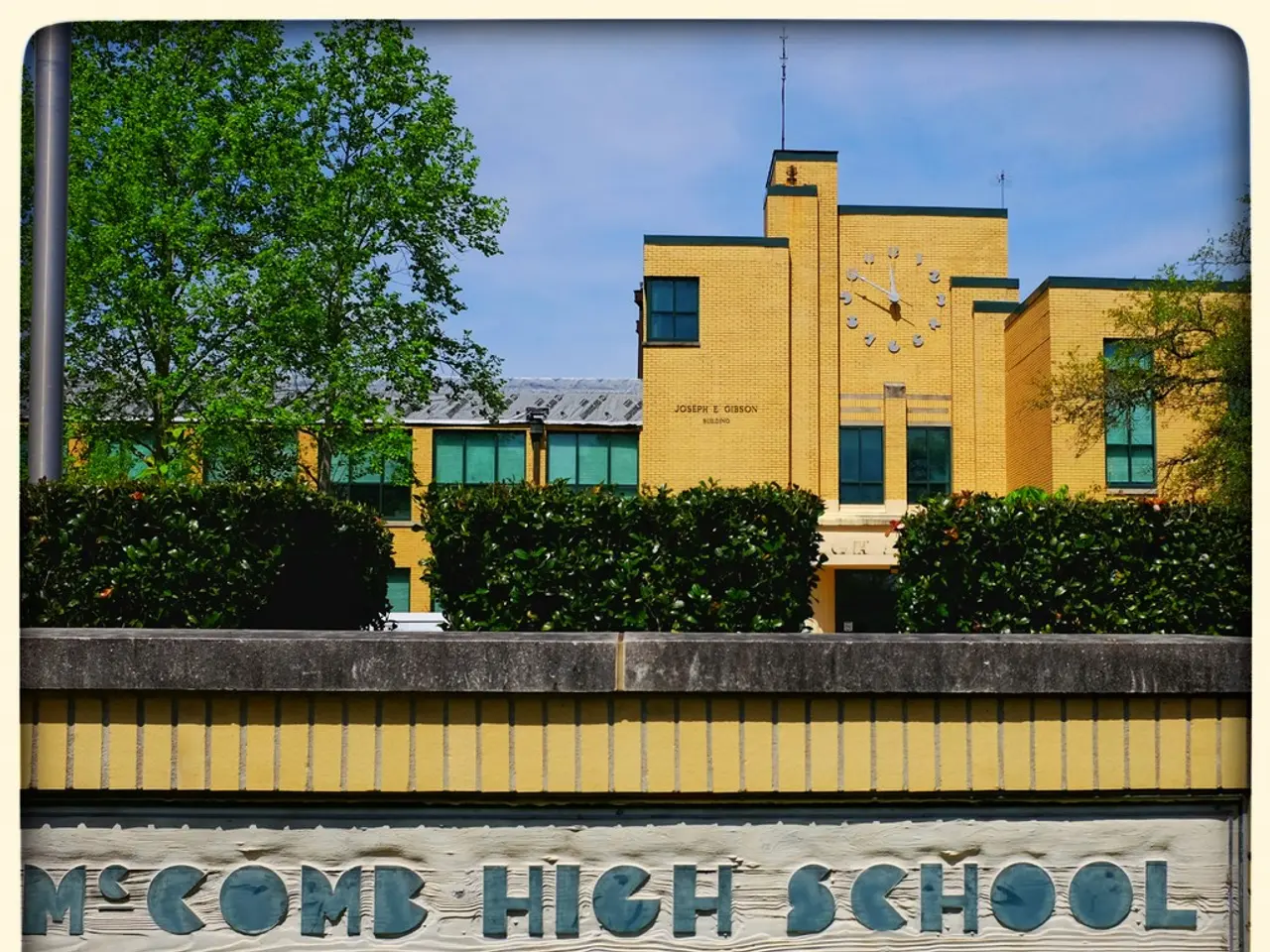Constructing schools for intense heat conditions - omitting air conditioning systems
In a bid to combat the effects of global warming, architects are turning to innovative and eco-friendly solutions for school design. One such pioneer is German architect Anna Heringer, known for her work in building schools with low-tech materials, yet boasting high-tech performance.
Heringer's schools, constructed with locally sourced materials like clay, are designed to harness the power of passive cooling techniques. These strategies, such as cross-ventilation, shading, and thermal mass materials, naturally regulate temperature, reducing the need for energy-intensive air conditioning.
Cross-ventilation is achieved by designing classrooms with openings at both ends to create natural airflow, cooling interior spaces without energy use. Shading and roof design involve using overhanging roofs and elevated, ventilated roofing to increase air circulation and shade walls from direct sun. Thermal mass materials, like clay, absorb heat during the day and release it at night, stabilizing indoor temperatures and reducing daytime heat stress.
Biomimicry inspiration, designing buildings based on natural ventilation mechanisms, is another strategy. For instance, termite mounds, which regulate internal climate through passive airflow systems, serve as a model for these designs.
Local materials serve multiple sustainability purposes. They reduce the carbon footprint linked to transportation, are often well-adapted to the climate, and help maintain lower indoor temperatures naturally.
Supplementary measures sometimes include solar-powered fans or cooling units to supplement passive systems sustainably, especially where more active cooling is briefly needed. Community involvement in operating and maintaining cooling systems also ensures sustainability and local empowerment.
These designs target classroom temperatures not exceeding around 26°C, considered essential for effective learning in hot climates.
This approach is gaining global attention and marks a significant shift away from conventional air conditioning, which relies on fossil fuels and exacerbates global warming. Paris, for example, aims to convert all asphalted schoolyards to green oases by 2050.
Interestingly, contrary to popular perception, clay walls do not dissolve in the rain. Simple techniques can prevent erosion, and a natural crystallisation process strengthens the walls over time. In fact, clay buildings that are hundreds of years old exist in various cultures and climates.
Kéré, an organisation that receives many inquiries about building with clay and passive cooling, is a testament to the growing interest in these sustainable solutions. Scientists are also working on high-tech coatings for buildings that could potentially outperform air conditioners, further enhancing the potential of passive cooling techniques.
In summary, sustainable school design in a warming climate emphasizes passive cooling through building form and orientation, ventilation strategies, and the use of locally sourced natural materials like clay that moderate heat, reducing energy use and improving student comfort and educational outcomes. This shift towards eco-friendly solutions not only benefits the environment but also promises a more sustainable and comfortable learning environment for future generations.
[1] Thomson Reuters Foundation, a charitable arm of Thomson Reuters that covers humanitarian news, climate change, resilience, women's rights, trafficking, and property rights, has been reporting on these developments extensively.
- Anna Heringer's innovative schools, constructed with locally sourced materials like clay, employ passive cooling techniques to regulate temperature, reducing the need for energy-intensive air conditioning.
- Cross-ventilation, shading, and thermal mass materials are some passive cooling strategies used in Heringer's eco-friendly school designs, promoting sustainability and energy conservation.
- Biomimicry is another approach used in sustainable school design, with termite mounds serving as an example of natural ventilation mechanisms employed in these structures.
- Using locally sourced materials not only reduces carbon footprint and helps maintain lower indoor temperatures but also contributes to water security by adapting to climate conditions.
- Solar-powered fans or cooling units may supplement the passive systems in certain situations, ensuring sustainable and effective cooling in hot climates while still prioritizing low energy consumption.
- Scientists are currently working on high-tech coatings for buildings that could potentially outperform air conditioners, further advancing the potential of passive cooling techniques in sustainable school design, supporting the United Nations' Sustainable Development Goals (SDGs) and fostering environmental-science education and self-development through technology.




